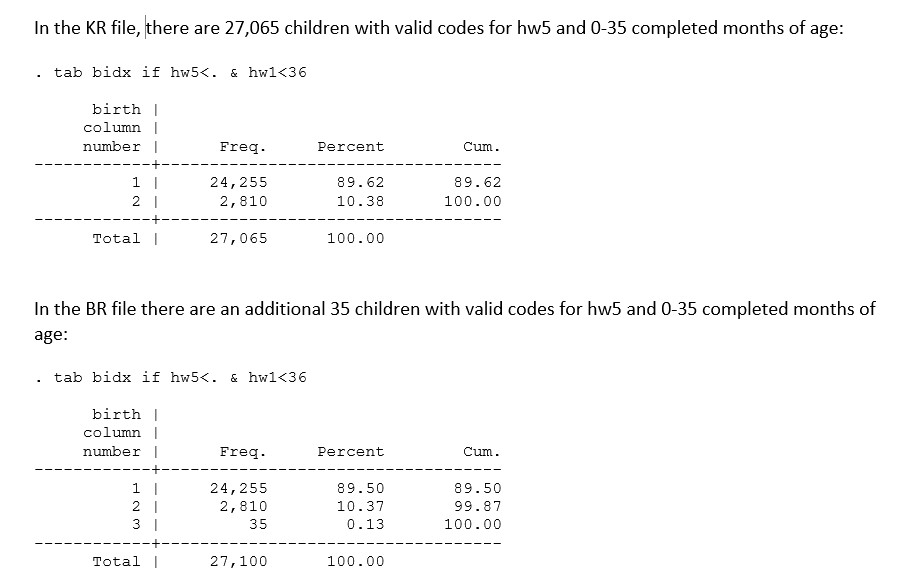| Re: HT/age standard deviations in DHS India 1998-1999 [message #24906 is a reply to message #24896] |
Mon, 01 August 2022 12:17  |
 Bridgette-DHS
Bridgette-DHS
Messages: 3230
Registered: February 2013
|
Senior Member |
|
|
Following is a response from DHS Research & Data Analysis Director, Tom Pullum:
This survey had a three-year window of time for the child health questions, including anthropometry, rather than the usual 5-year window. It will be much easier for you if you use the KR or BR files, in which children are units.
However, I see some differences.

Normally the children in the KR and BR files would be the same for the interval for the child health questions.
You say that you get up to 4 children. I only get 2 or 3, depending on which file I use. I don't understand where you found 4, but the main reason why there are fewer children than in most surveys is that the window was 3 years rather than 5.
You are using hw5, hw8, and hw11 for anthropometry. In the newer surveys, we use hw70, hw71, and hw72. There is a file "IAHW43FL.dta" that gives the newer (WHO) scores, and it can be merged with the KR or BR files. I strongly recommend using the newer scores for better continuity with recent surveys and more comparability with other countries. You should be able to find that HW (H for height and W for weight) file on the website. Let us know if you cannot find it.
-
 Attachment: tab-bidx.jpg
Attachment: tab-bidx.jpg
(Size: 69.03KB, Downloaded 609 times)
|
|
|
|